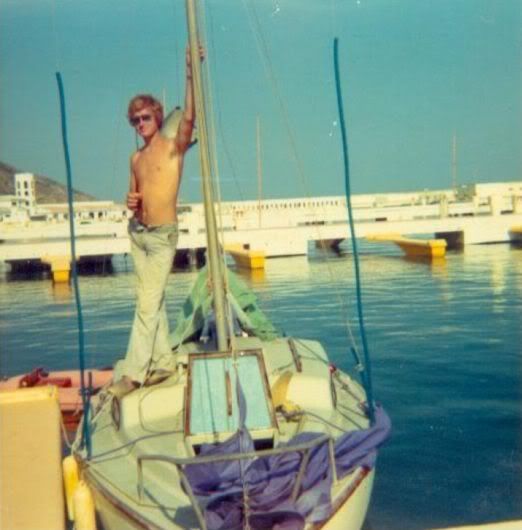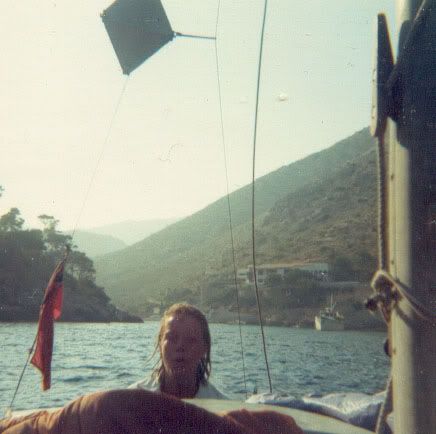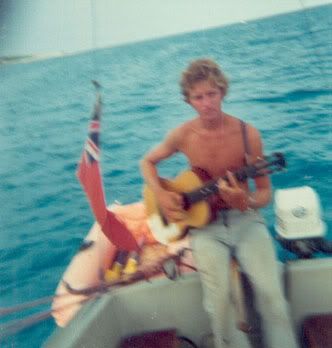(July 24 - 31, 2002)
This cruise report does not really
belong on this site, because I did not have my Alacrity at that time
yet. Instead I was the co-owner of a 1964 wooden folkboat called
"Malin". I had just met my then wife-to-be and she had never ever been
on a sailboat before, except for a few quite unlucky shakedown cruises
with either too less wind or too much rain.
However she agreed to a one week's cruise our first summer together.
There are quite a few people who would say that if you can live
together one week on a moderately leaky and damp 26 foot wooden
sailboat, there should be no problem with living together as a married
couple afterwards. So far this has been true.
My idea with this first cruise was to sail into lake Mälaren which
has less traffic and weaker winds than the archipelago and the Baltic.
Additionally there are quite a few things to see. We would sail to the
nice little town of Mariefred with it's famous Gripsholm castle. On our
way there we would visit the island of Birka, where excavations have
revealed one of the biggest viking settlements ever found.
To my wife's annoyance I had decided that we should have one more crew
on the first leg of the cruise. At that time Malin had a berth on the
archipelago side of Stockholm, actually in the same club marina where
my Alacrity is today. Our cruise, however, would take us into the
sweetwater lake Mälaren west of the city. To get there we would
have to navigate an opening bridge and a lock. I was a bit worried as I
never had gone through a lock before and this was the main reason why I
liked one more crew to feel safe.
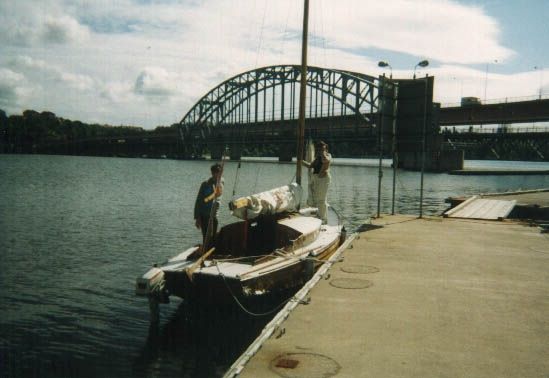
Here we are waiting for the bridge to be opened. The guy who is
standing aft is my friend Jesper who accompanied us the first day. We
had requested the bridge to be opened at 10 a.m. The weather was nice
and sunny, however the forecast spoke of rain later that day.
When we had passed through the bridge we sailed for about half an hour.
Then we decided to start the engine, a very old Evinrude 6hp outbord
which, however, worked nicely almost the whole time. We did this mainly
because of poweboat swell, something I would never do today as I since
have learned that motoring through swell is much more annoying than
sailing through it. Also, we soon would have to enter a canal to get to
the lock and we wanted to get there as quickly as we could.
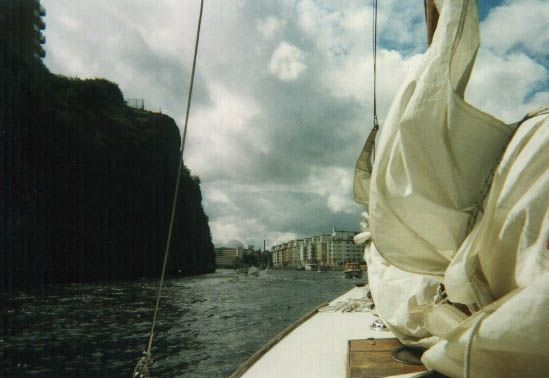
Here we are in the canal. It is a very special feeling to sail (or
motor) right through the city. You can see the houses on the right
side. A bit further down there are actually buildings on both sides of
the canal.
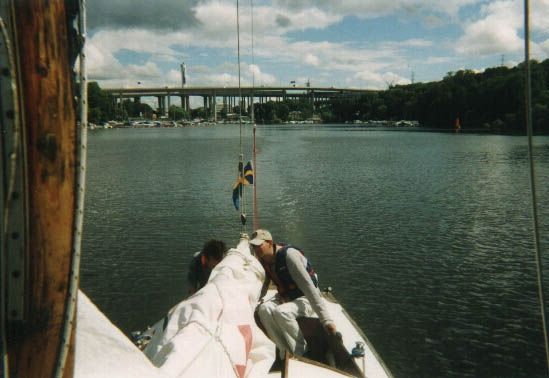
We are through the lock, it's right there under the bridge. Now we are
floating in fresh water. I remember actually having a silly feeling of
what if the boat wouldn't float on the other side when going through
the lock. The passage itself was no problem at all and my wife was of
course right that we never would have needed the extra crew. Today I
would confidentially sail through single handed, but I did not know
this then! The lock itself is mainly there to regulate the water flow
from lake Mälaren into the Baltic and there is only few
inches of height difference.
After about one more hour's motoring we finally could set sail. Of
course it almost immediately began to rain.
In lake Mälaren there are almost no natural harbours or anchorages
at all. Instead local yacht clubs have docks on small islands where
guest boats are welcome for a moderate fee. Our first night we stopped
at one of these, called Jungfruöarna (The Virgin Islands). Before
we moored there, we dropped off Jesper att a dock on Ekerö island
from where he would take the bus home.

Jungfruöarna are two small islands connected by a tiny bridge.
There is a club house and a sauna belonging to the yacht club and very
nice docks. We rigged the boom tent (cheap tarp type) in case it would
rain more and relaxed before dinner.
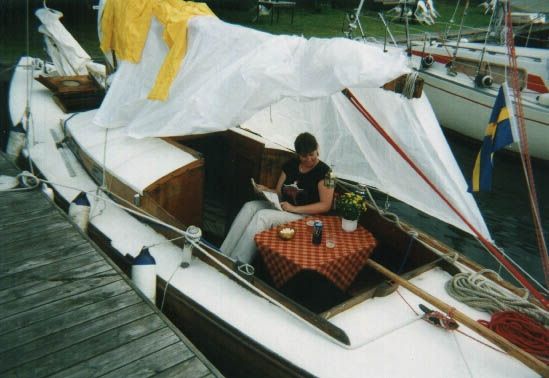
The next morning we sailed on to Birka. Winds were light from the
Southwest so we were on a close reach most of the time and not moving
very fast. At one time we were followed by a swan family...
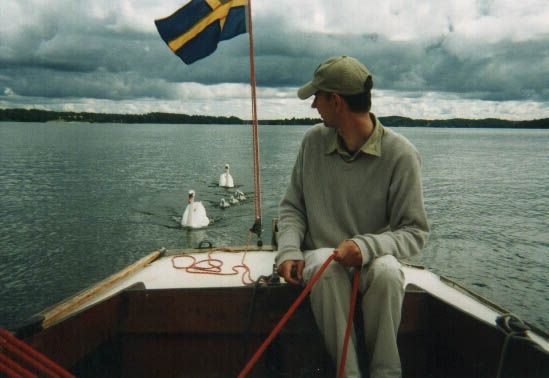
When we reached the somewhat more open waters of Björkfjärden
which we had to cross to get to Birka the wind died almost completely.
It was warm and sunny and most other boats were motoring or just
drifting along. However, after about half an hour the wind picked up
again and we could sail comfortably to Björkö and the viking
settlement of Birka.
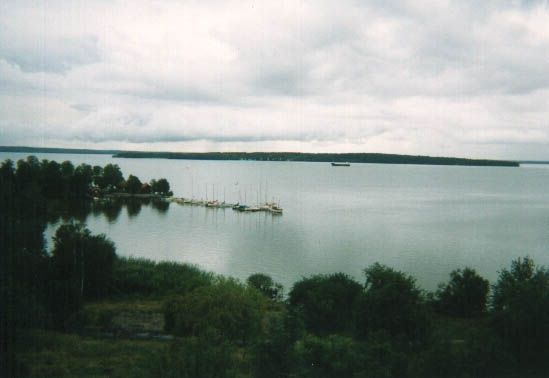
This is the visitor's dock at Birka. It is quite open to the west, but
very sheltered from all other directions. When we arrived we checked
the weather forecast which was talking about somewhat stronger winds
from the west the next day, however the night should be quiet....
The viking village of Birka itself was a disappointment. We had
imagined some reconstructed viking buildings, longboats and people
demonstrating ancient craftmanship. The reality was a tourist
restaurant and a small museum. The rest was holes in the ground
(excavations) and sheep.
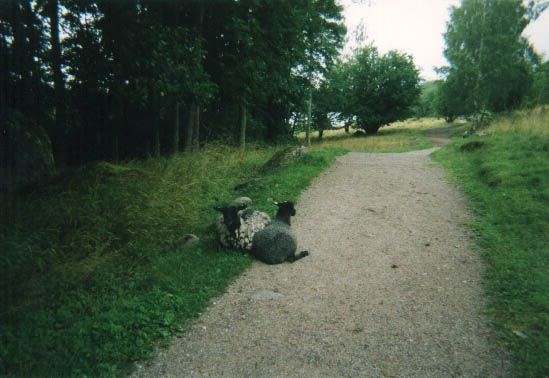
Now, two years later, there have been newspaper reports that there has
been some development since. Now they apparently have some real viking
stuff going on. Most people who visit Birka do this by ferry from
Stockholm, a nice day trip.
On the highes hill on Björkö there is a monument of Ansgar
who was the first christian in Scandinavia.
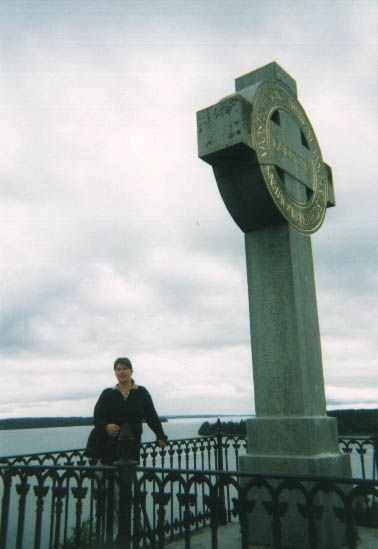
This is my wife at the monument. The view is really great. The picture
below shows the hill and the monument from the seaside.
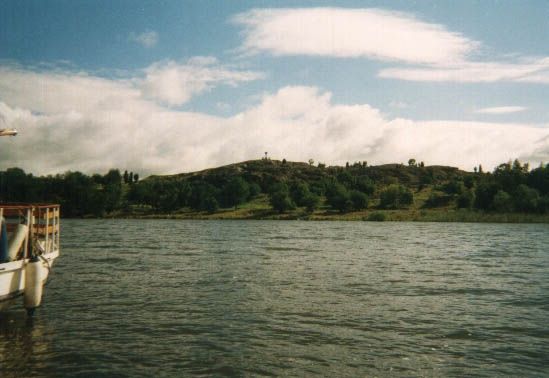
Of course, the weather forecast was wrong. The west wind came already
in the middle of the night and with it quite a swell. In the early
hours I awoke and felt quite queasy. The boat next to us decided to
leave. We, however tried to get some more sleep with doubtable results.
Instead we went to the restaurant as soon as it opened for the day and
ate a early breakfast on firm and steaday ground. Then we left to sail
for Mariefred and Gripsholm castle.
Winds were perfect and after two days of light winds the boat and it's
crew took real delight in some real sailing. The last part of the
approach to Gripsholm cove was quite tricky with very few navigation
aids (and some out of date charts). All went well however.
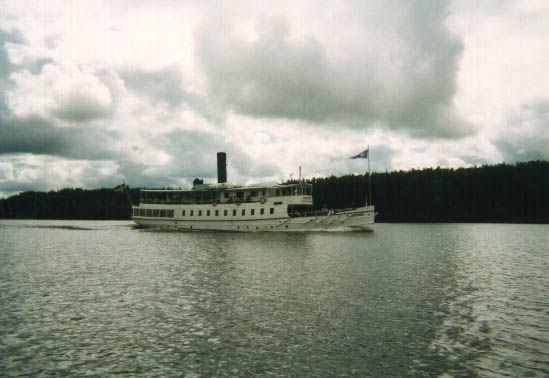
This is the steamboat "Mariefred". It was built in 1903 and has since
sailed on the Stockholm-Mariefred trade. It is one of very few coal
steam ships still in active service in Sweden and the only one on lake
Mälaren.
When we berthed at Mariefred community dock the trusty Evinrude
suddenly died. Fortunately the boat was gliding fast enough for me to
get hold of a nearby mooring buoy. Afterwards we concluded that the
engine failure probably was caused by myself sitting on the fuel hose...
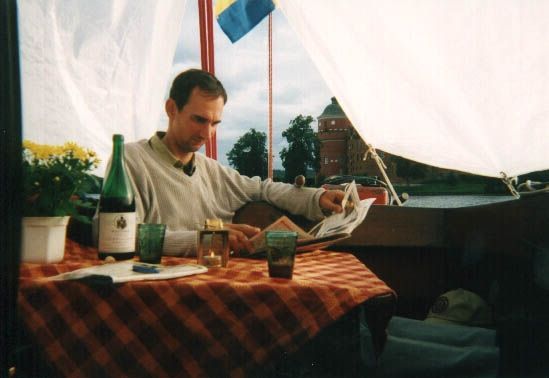
Here we would stay two days and rest. Time to open a bottle of red
wine. In the backgrund you can see one of the four towers of Gripsholm
castle.
Gripsholm castle was built by king
Gustav Vasa in 1537 as a part of a new national defense system. It was
restored in Gustav III's time including a little theatre inside the
castle. During the second world war the German writer Kurt Tucholsky
lived (and died) here. Maybe this is why so many German boats visit
lake Mälaren. Today the castle harbours a famous collection of
portraits which is really worth visiting.
Mariefred is a cozy little town. During the summer it is visited by
many tourists. There is an old narrow gauge steam railway connecting
the town with the national railway system at Läggesta. Round trips
by steamboat, steam train and back to Stockholm by ordinary train are
very popular.

The steam is from the train's engine, not coming out of my head...
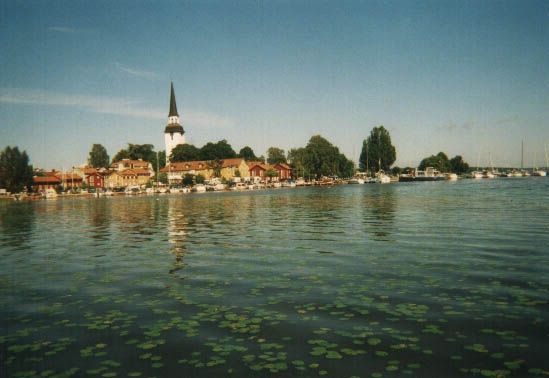
The town viewed from the castle. The community dock is right in the
middle of the town.
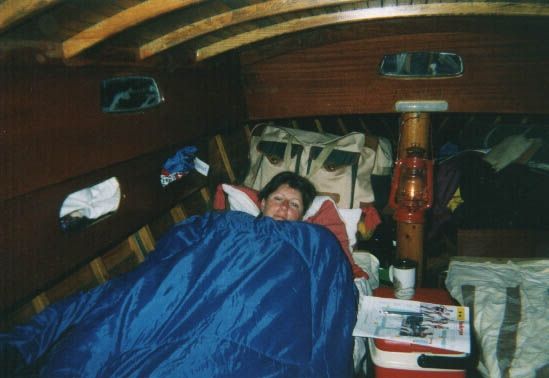
After a relaxing day and a good night's sleep we sailed from Mariefred,
now homeward bound. Winds were light in the beginning, but picked up
somewhat later. This time we had a nice beam reach in perfect weather.

We sailed to another yacht club island, Slandö kalv. It was quite
crowded and amongst all the boats were two German folkboats who had
been participating in a race on lake Mälaren. They did not sail
here from Germany, though, but trailered instead.

whatsoever, so we decided to stay here another day. The island is quite
small so there is not too much to do. Instead we used the inflatable
dinghy to explore the surroundings and had a swim.
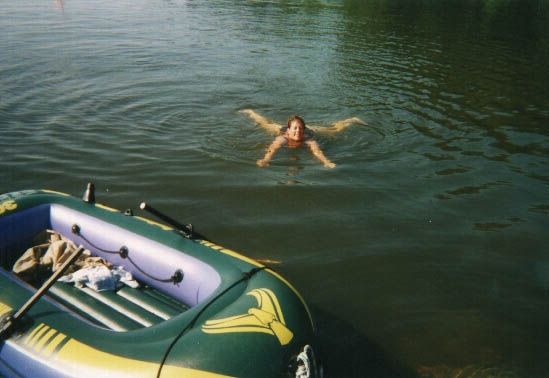
cruise left. As we were still to far from home to get there on a single
day's comfortable sail, we decided to make a last stop at
Jungfruöarna, the same island as on our way out.
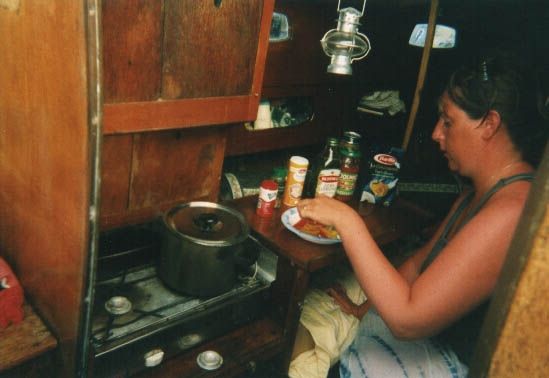
dinner. The next day we sailed home and got through the lock one more
time.
During this trip my wife really got hooked on sailing. Since, we have
bought our own little boat and now we are sailing in the more open
waters of the archipelago and the Baltic.






